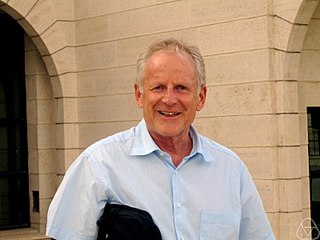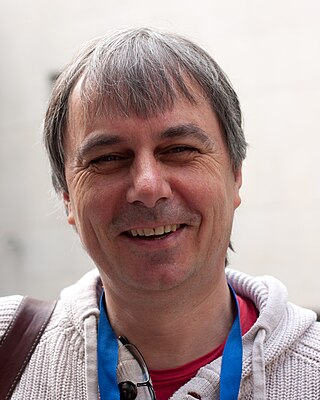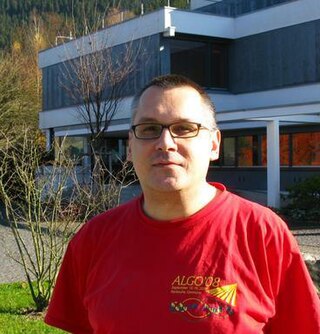Related Research Articles

The University of Graz, located in Graz, Austria, is the largest and oldest university in Styria, as well as the second-largest and second-oldest university in Austria.

Graz University of Technology is one of five universities in Styria, Austria. It was founded in 1811 by Archduke John of Austria and is the oldest science and technology research and educational institute in Austria. It currently comprises seven faculties and is a public university. It offers 19 bachelors and 35 masters study programmes across all technology and natural science disciplines. Doctoral training is organised in 14 English-speaking doctoral schools. The university has more than 13,000 students, and approximately 2,000 students graduate every year. Science study programmes are offered in the framework of NAWI Graz together with the University of Graz.

Johann Bernhard Fischer von Erlach was an Austrian architect, sculptor, engraver, and architectural historian whose Baroque architecture profoundly influenced and shaped the tastes of the Habsburg Empire. His influential book A Plan of Civil and Historical Architecture (1721) was one of the first and most popular comparative studies of world architecture. His major works include Schönbrunn Palace, Karlskirche, and the Austrian National Library in Vienna, and Schloss Klessheim, Holy Trinity Church, and the Kollegienkirche in Salzburg.
Jonathan Michael Borwein was a Scottish mathematician who held an appointment as Laureate Professor of mathematics at the University of Newcastle, Australia. He was a close associate of David H. Bailey, and they have been prominent public advocates of experimental mathematics.

Bruno Buchberger is Professor of Computer Mathematics at Johannes Kepler University in Linz, Austria. In his 1965 Ph.D. thesis, he created the theory of Gröbner bases, and has developed this theory throughout his career. He named these objects after his advisor Wolfgang Gröbner. Since 1995, he has been active in the Theorema project at the University of Linz.
Erwin Otto Kreyszig was a German Canadian applied mathematician and the Professor of Mathematics at Carleton University in Ottawa, Ontario, Canada. He was a pioneer in the field of applied mathematics: non-wave replicating linear systems. He was also a distinguished author, having written the textbook Advanced Engineering Mathematics, the leading textbook for civil, mechanical, electrical, and chemical engineering undergraduate engineering mathematics.
Franz Baader is a German computer scientist at Dresden University of Technology.
Franz Josef Hočevar, in Slovenian, Franc Jože Hočevar was an Austrian–Slovenian mathematician and author of mathematical books.

Herbert Edelsbrunner is a computer scientist working in the field of computational geometry, the Arts & Science Professor of Computer Science and Mathematics at Duke University, Professor at the Institute of Science and Technology Austria (ISTA), and the co-founder of Geomagic, Inc. He was the first of only three computer scientists to win the National Science Foundation's Alan T. Waterman Award.

Juraj Hromkovič is a Slovak Computer Scientist and Professor at ETH Zürich. He is the author of numerous monographs and scientific publications in the field of algorithmics, computational complexity theory, and randomization.
Raimund G. Seidel is a German and Austrian theoretical computer scientist and an expert in computational geometry.

Hellmuth Stachel is an Austrian mathematician, a Professor of Geometry at the Technical University of Vienna, who is known due to his contributions to geometry, kinematics and computer-aided design.
Rainer Ernst Burkard is an Austrian mathematician. His research interests include discrete optimization, graph theory, applied discrete mathematics, and applied number theory.
Pankaj Kumar Agarwal is an Indian computer scientist and mathematician researching algorithms in computational geometry and related areas. He is the RJR Nabisco Professor of Computer Science and Mathematics at Duke University, where he has been chair of the computer science department since 2004. He obtained his Doctor of Philosophy (Ph.D.) in computer science in 1989 from the Courant Institute of Mathematical Sciences, New York University, under the supervision of Micha Sharir.
Hans Robert Müller was an Austrian mathematician, professor and director of mathematical institutes at two universities.
Kuno Ruben Gabriel (1929–2003) was a statistician known for the inventing the biplot and the Gabriel graph and for his work in statistical meteorology.

Gerhard J. Woeginger was an Austrian mathematician and computer scientist who worked in Germany as a professor at RWTH Aachen University, where he chaired the algorithms and complexity group in the department of computer science.

Alexander Aigner was number theorist and a full university professor for mathematics at the Karl Franzens University in Graz, Austria. During World War II he was part of a group of five mathematicians, which was recruited by the military cryptanalyst Wilhelm Fenner, and which included Ernst Witt, Georg Aumann, Oswald Teichmueller and Johann Friedrich Schultze, to form the backbone of the new mathematical research department in the late 1930s, which would eventually be called Section IVc of Cipher Department of the High Command of the Wehrmacht.. The group was led by the German professor of mathematics Wolfgang Franz.

Robert Franz Tichy is an Austrian mathematician and professor at Graz University of Technology.
Karl Kunisch is an Austrian mathematician.
References
- 1 2 3 Curriculum vitae, retrieved 2018-08-12.
- ↑ Franz Aurenhammer at the Mathematics Genealogy Project